The dairy feeding industry strives to optimize protein efficiency by formulating diets to meet amino acid requirements.
However, researchers at Ohio State University questioned the possibility that early-lactation cows are being cheated out of much-needed amino acids for both milk synthesis and to reduce early-lactation weight loss.
The researchers showed that providing additional rumen escape protein for the first 25 days of lactation improved production and reduced weight loss. However, the amino acid balance was most important.
All cows received the same close-up diet. After calving, they were assigned to the experimental diets for the first 25 days in milk (DIM). After 25 days, the cows were switched to a common diet and monitored until they were 92 DIM. There were 20 cows on each treatment, with half being first-calf heifers and half being mature cows.
As Table 1 shows, the control diet was a typical early-lactation diet based on corn and soybean meal.
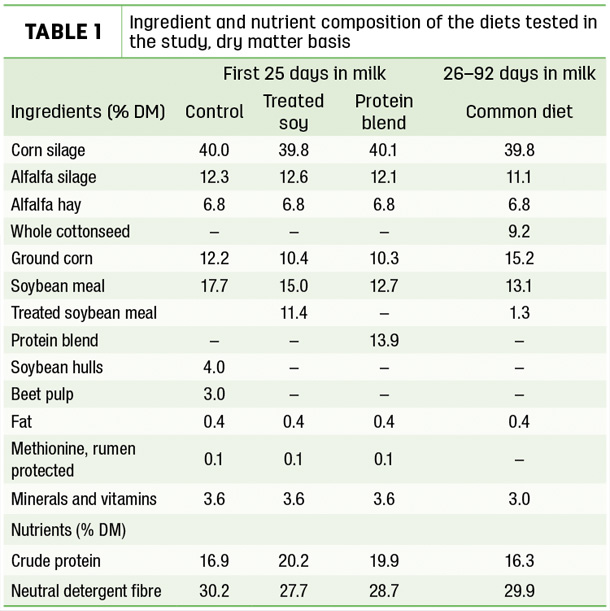
The treated soy diet provided the cows with additional high rumen bypass soybean meal. The protein blend diet contained a blend of a commercial product prepared from canola meal and soybean meal (76.9%), corn gluten meal (18%) and rumen-protected amino acids (5.1%). The blend was formulated to have an amino acid composition that matched casein, the main protein in milk.
It is important to note all diets supplied rumen-protected methionine. This amino acid is often limiting, and adding it allowed the researchers to gain knowledge about the effects of other essential amino acids.
During the test feeding period, there was an immediate increase in dry matter intake (DMI) with both first-lactation and later-lactation cows when they were given the protein blend but not the treated soy supplements. Both protein supplements improved milk and energy-corrected milk yield, with the protein blend being the most effective in the multiparous cows (Table 2).
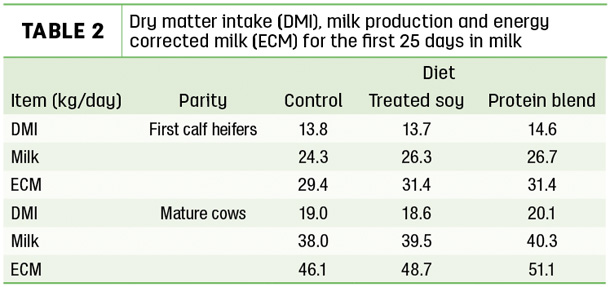
There was also less weight loss by the multiparous cows when they received the protein blend diet (Table 3).
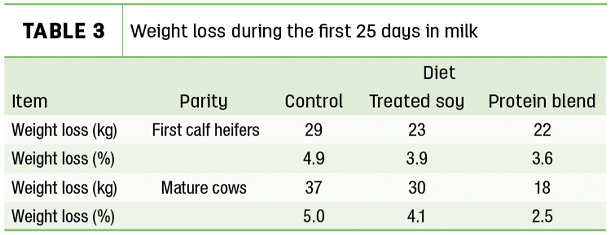
What is most interesting is what happened after all cows were changed back to the common diet. As Table 4 shows, milk and energy-corrected milk remained higher for the cows in their first lactation with additional protein from either source.
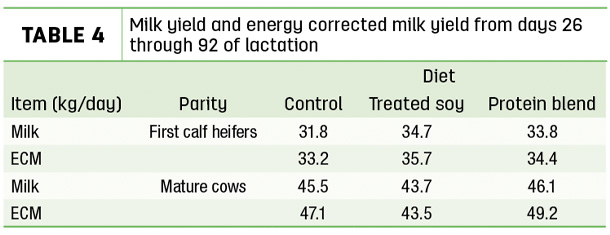
In contrast, only the protein blend resulted in milk yields higher than the control for the multiparous cows in parity 2 and onward.
An alternative approach
The research team of Kuehnl and Kalscheur from the University of Wisconsin and U.S. Dairy Forage Research Center took a different approach to optimizing amino acids for cows in early lactation. In a study reported at the American Dairy Science Association annual meeting, the researchers compared the performance of cows provided with soybean meal or canola meal as the primary source of protein. They selected canola meal as an ingredient that has an amino acid profile closer to milk protein (casein) than other vegetable proteins, and canola meal provides a significant amount of bypass protein.
The compositions of the two diets are shown in Table 5.
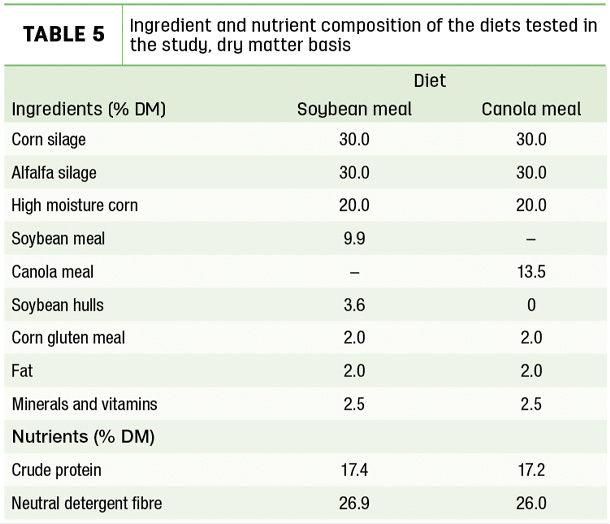
The control diet was a common corn, soybean meal diet, and the test diet provided protein from canola meal. There were 40 cows in each treatment group; all were multiparous. The diets were provided for the first 16 weeks of lactation.
As with the previous experiment, DMI, milk yield and energy-corrected milk yield were all higher with the diet containing canola meal, relative to soybean meal (Table 6).

However, there was no need to increase the percentage of protein in the diet when the more balanced amino acid source was chosen. This approach may be more convenient for farms that do not segregate early-lactation cows.
These two experiments demonstrate the importance of amino acid balance for fresh cows. Having the correct amino acid balance can result in getting cows to consume greater amounts of feed and lose less weight immediately after calving. Improved milk yield can continue well into the lactation period.
The development of this article was funded by the Government of Canada under the Canadian Agricultural Partnership’s AgriMarketing Program.
References omitted but are available upon request by sending an email to the editor.









